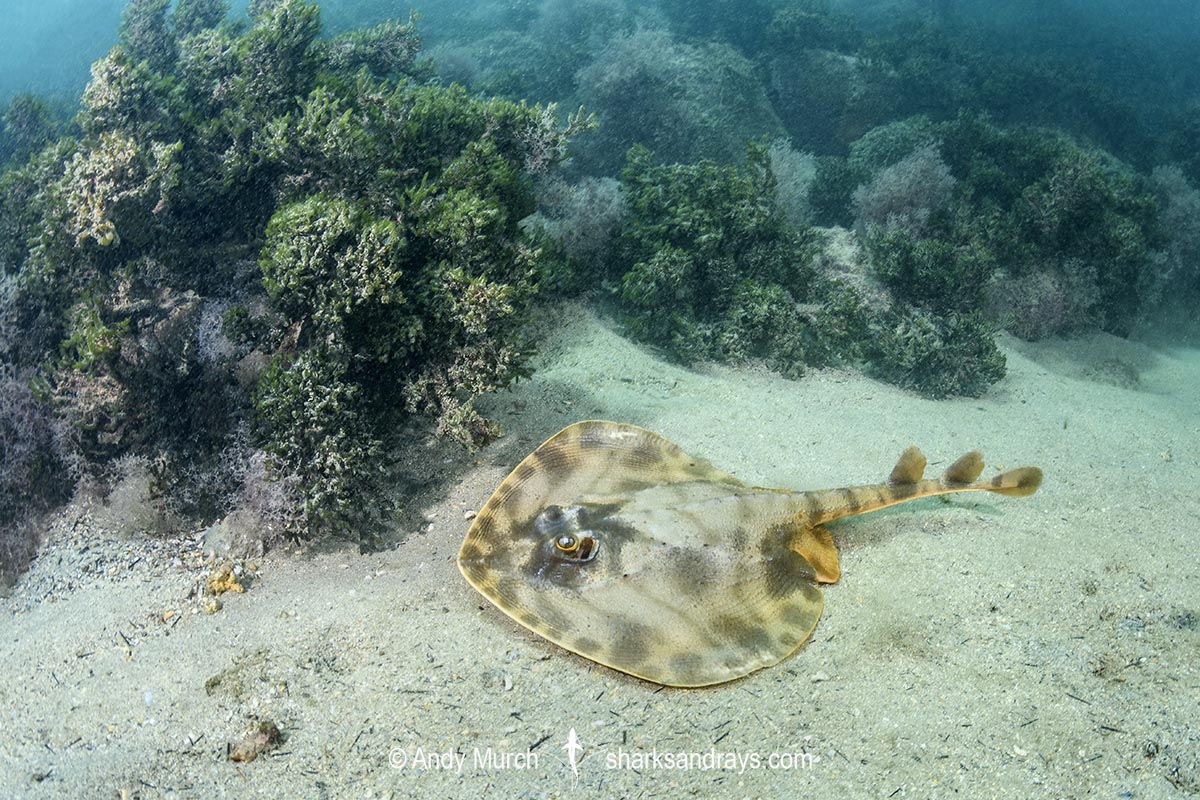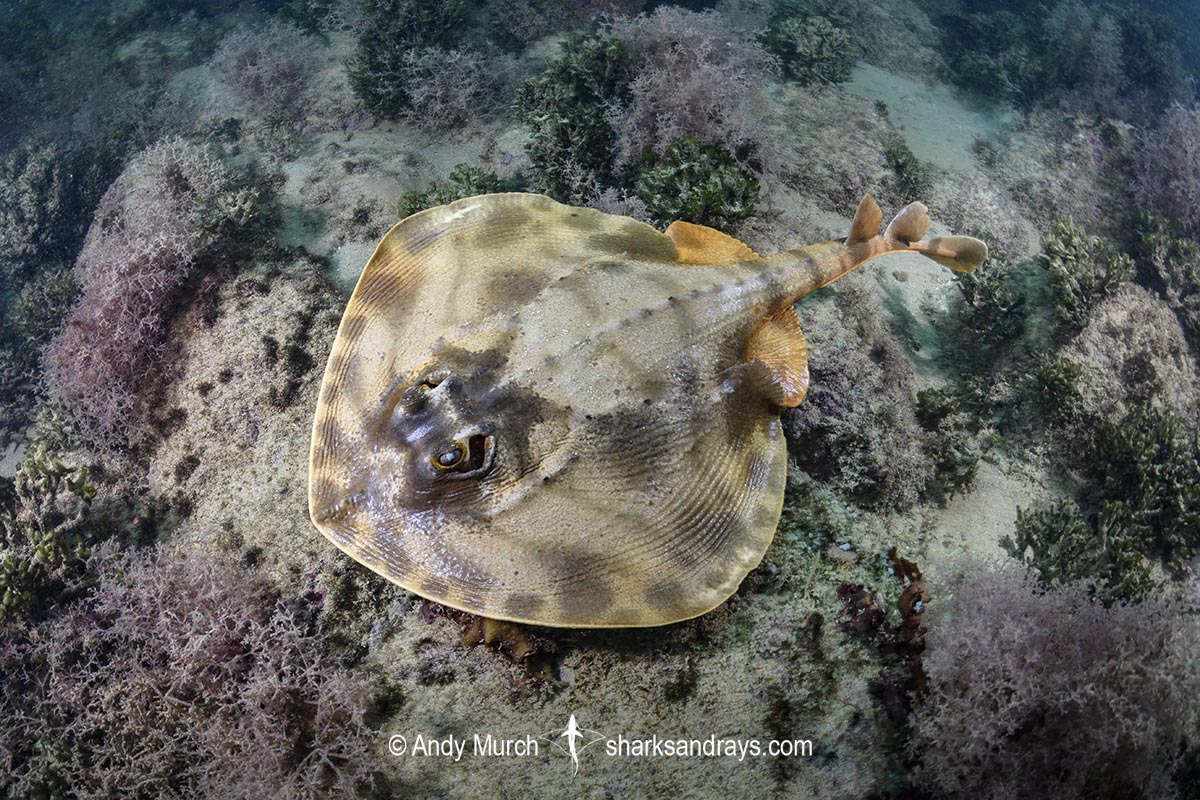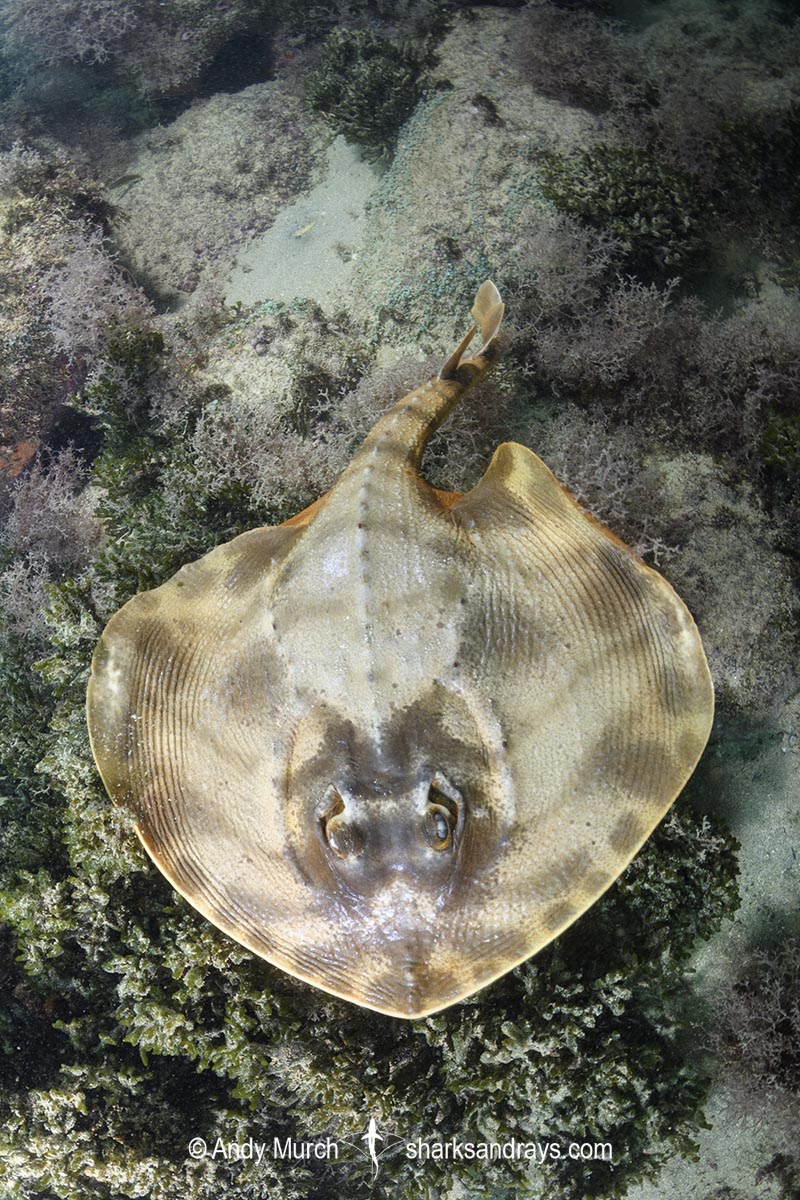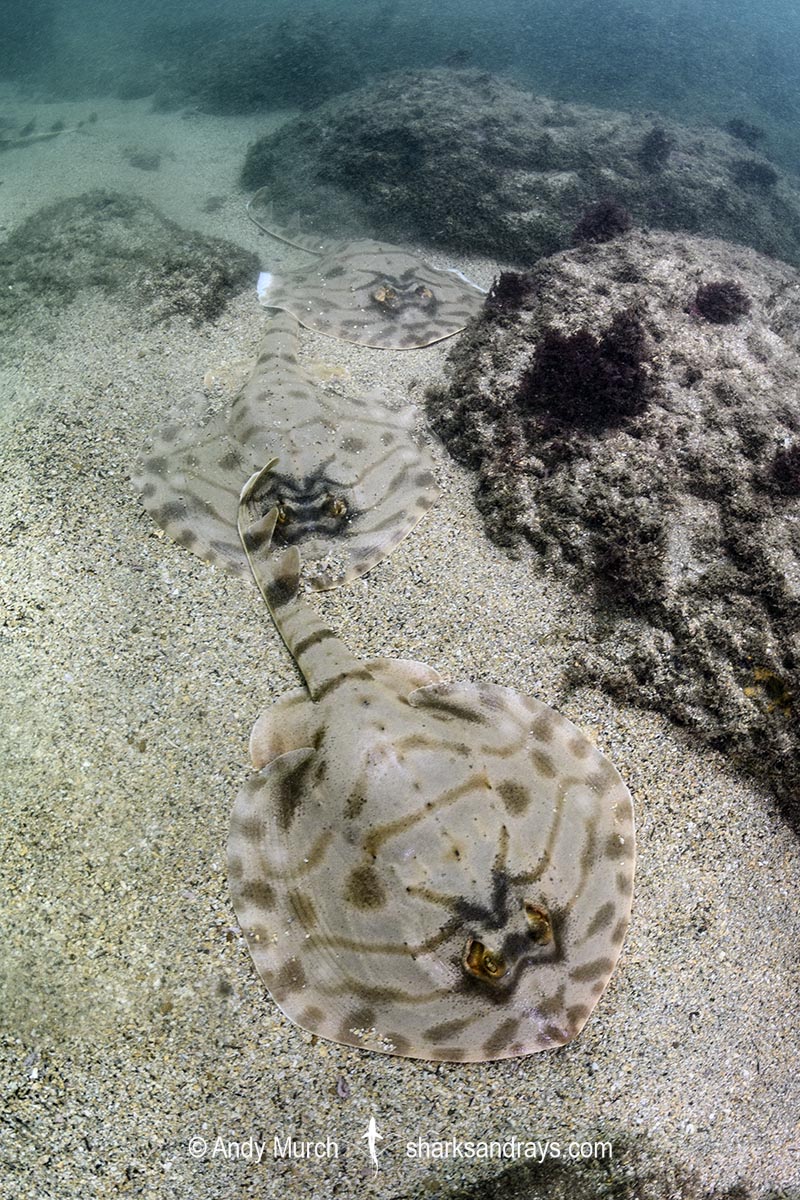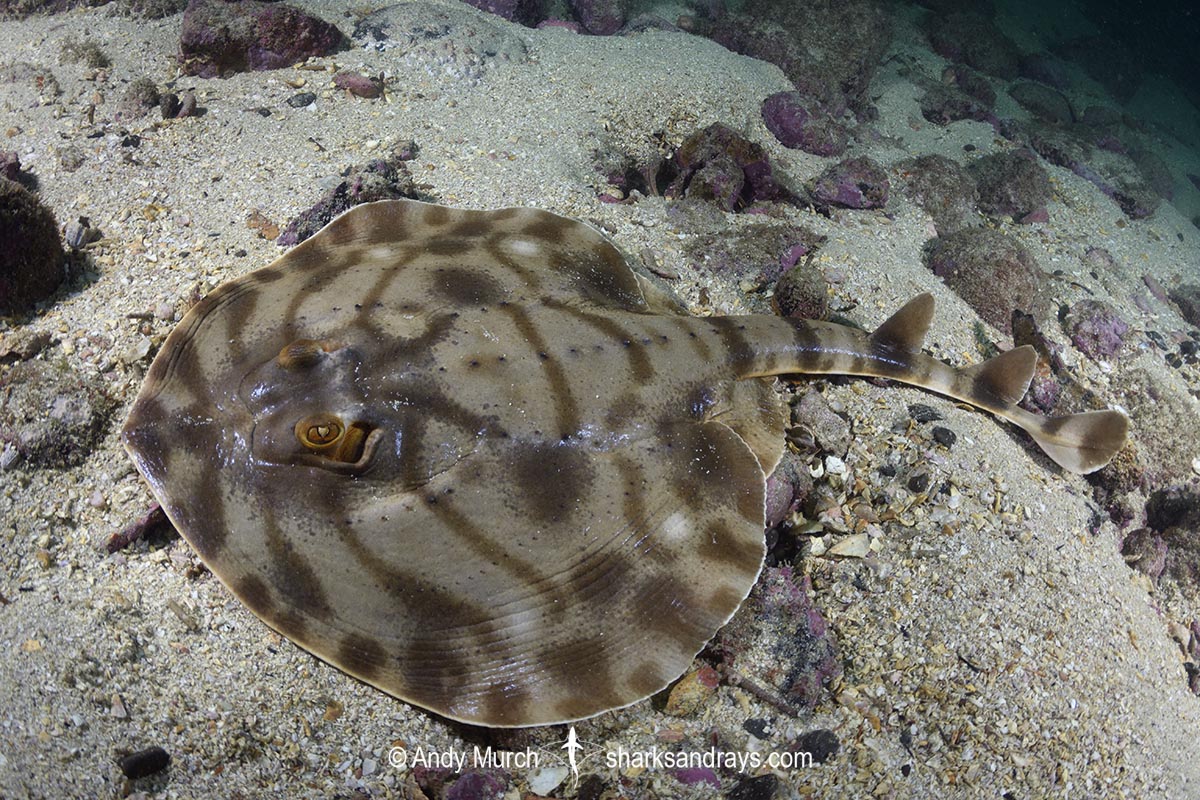Common name(s)
Striped Panray, Tiger Ray.
Identification
A large panray with a subcircular or rounded-rhomboidal disc. Disc slightly wider than long. Snout obtusely angular. Anterior margins of disc convex. Pectoral fin apices broadly rounded. Eyes protruding. Spiracles large.
Skin densely covered in small denticles. Numerous rows of flattened thorns on pectoral fins.
Single larger thorn row on each shoulder, and a continuous row of large thorns along medial ridge from eyes to first dorsal fin.
Tail fairly robust, slightly longer than disc length. Dorsal fins quite large and high and well separated. with rounded apices. Caudal fin triangular, with a broadly-rounded posterior margin.
Colour
Dorsal coloration quite variable; Bright yellow-orange, beige, greyish-brown, or pale. Adults display a bold pattern of thin dark bands across centre line, breaking into dark blotches near pectoral fin margins. Makings on juveniles may be very subtle (see image #67).
Ventrum pale/white, sometimes with dark fin margins and a few dark blotches.
Varying degrees of leucism have been recorded in this species (see images #80 and #92).
Size
Maximum length 60cm. Size at birth ~19cm.
Habitat
Tropical to warm-temperate seas. Benthic on sandy inshore substrates often around reefs. From very shallow water to 40m. Juveniles seen in 1m off Dakar (personal observation).
Distribution
The striped panray can be found along the coast of West Africa from southwestern Morocco to Angola. Some southern sightings are probably misidentifications of the recently described maculate panray (Zanobatus maculatus).

Conservation Status
VULNERABLE
The striped panray is commonly caught in trawl and trammel net fisheries, but is rarely retained or targeted because it is a small species with a thick hide that is difficult to skin. However, it is retained for consumption in Senegal and Mauritania.
It is a resilient species that is often captured alive so post catch mortality is probably low, but intense fishing pressure in the region has led to an estimated population reduction of 30–49% over the last 27yrs and a 90% reduction in Mauritania.
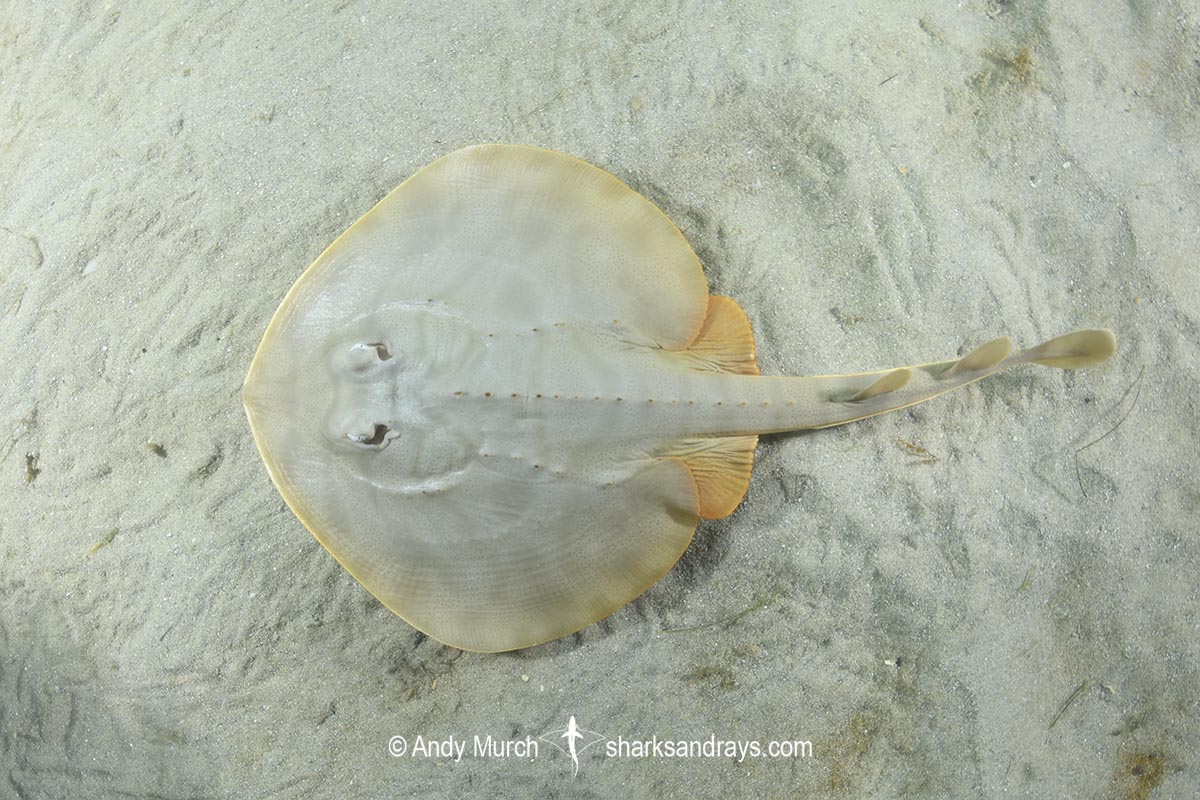
Reproduction
Ovoviviparous. Litter size 1-4.
Diet
Diet consists mainly on benthic invertebrates, especially shrimps.
Behavior
Enters very shallow water to feed and rest. At an inshore site near Dakar, hundreds of striped panrays were found resting in one small area at ~5m depth (see image #87). This may have been a mating aggregation but no evidence of mating was observed.
Reaction to divers
Very easy to approach. Will allow divers to fan away the sand from their backs, often remaining even if accidentally touched.
Diving logistics
The striped panray is the most commonly seen ray off Dakar in Senegal. It can be seen at most offshore dive sites but it is extremely common in very shallow water close to shore.
In July, I found a large aggregation of striped panrays resting together along the seawall in front of Nautilus Diving’s shop in Soumbedioune, Dakar.





